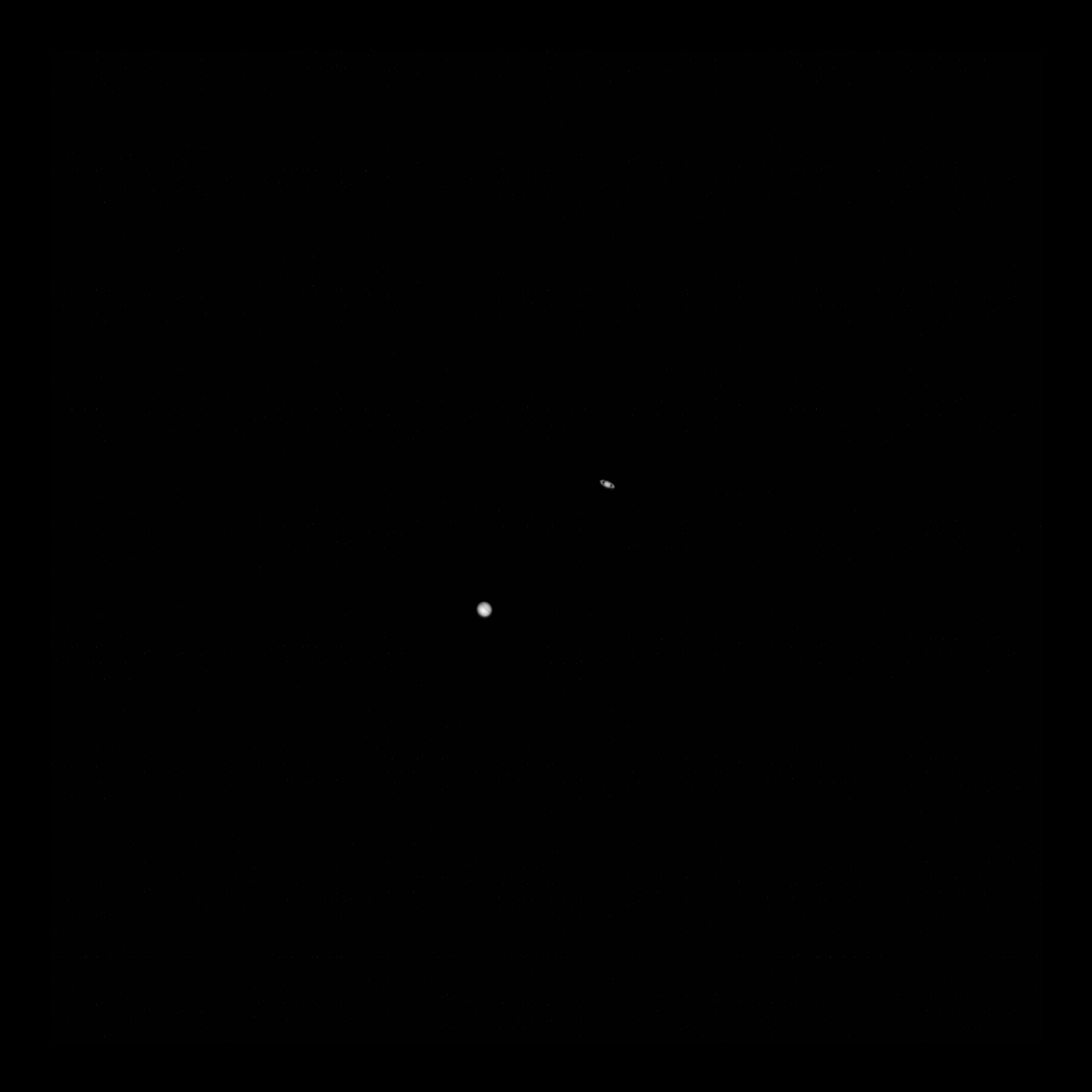NASA probe snaps 'great conjunction' photo of Jupiter and Saturn from the moon
Behold, the view from the Lunar Reconnaissance Orbiter!
A moon-orbiting probe got a stunning up-close view of the "great conjunction" of Jupiter and Saturn from Earth's rocky satellite.
Monday (Dec. 21), Jupiter and Saturn appeared closer in the night sky than they had in about 800 years during what's known as a "great conjunction." People all around the globe watched and photographed the planets, which looked almost like a single, bright "star" in the sky. However, us Earthlings weren't the only ones who got a celestial show.
NASA's Lunar Reconnaissance Orbiter (LRO), which launched in 2009 and has enough fuel to keep orbiting the moon for another six years, spotted the cosmic event all the way from the moon.
Related: This is what Jupiter and Saturn look like from Mars
The Lunar Reconnaissance Orbiter Camera's (LROC) Narrow Angle Camera (NAC) captured an unbelievable image of the two planets just a few hours after the pair's point of closest separation (0.1 degrees). Now, while Jupiter and Saturn may have looked like one glowing orb to the naked eye, with the detailed view of the NAC, you can clearly resolve the individual planets. In fact, the image provides so much detail that you can even faintly see Saturn's rings.
Here on Earth, skywatchers were able to see Jupiter's moons with DSLR cameras and even basic telescopes, though Saturn's rings were usually only visible with higher-powered telescopes.
When the NAC captured this image of the two planets, Jupiter was about four times brighter than Saturn, so the brightness of the original image was adjusted to make both equally visible.
Breaking space news, the latest updates on rocket launches, skywatching events and more!
While Jupiter and Saturn have a close conjunction once every 20 years, the planets haven't appeared this close since 1623. Additionally, the planetary alignment came just a few days before Christmas, with many dubbing the bright event a "Christmas Star," adding even more to the astronomical excitement.
Email Chelsea Gohd at cgohd@space.com or follow her on Twitter @chelsea_gohd. Follow us on Twitter @Spacedotcom and on Facebook.

Chelsea “Foxanne” Gohd joined Space.com in 2018 and is now a Senior Writer, writing about everything from climate change to planetary science and human spaceflight in both articles and on-camera in videos. With a degree in Public Health and biological sciences, Chelsea has written and worked for institutions including the American Museum of Natural History, Scientific American, Discover Magazine Blog, Astronomy Magazine and Live Science. When not writing, editing or filming something space-y, Chelsea "Foxanne" Gohd is writing music and performing as Foxanne, even launching a song to space in 2021 with Inspiration4. You can follow her on Twitter @chelsea_gohd and @foxannemusic.


